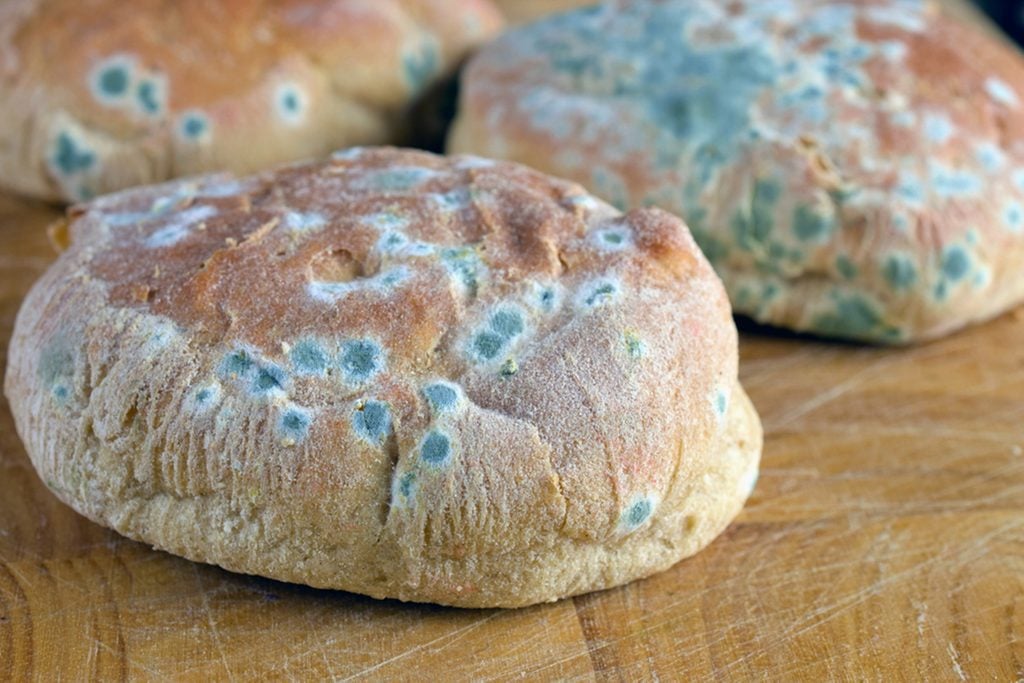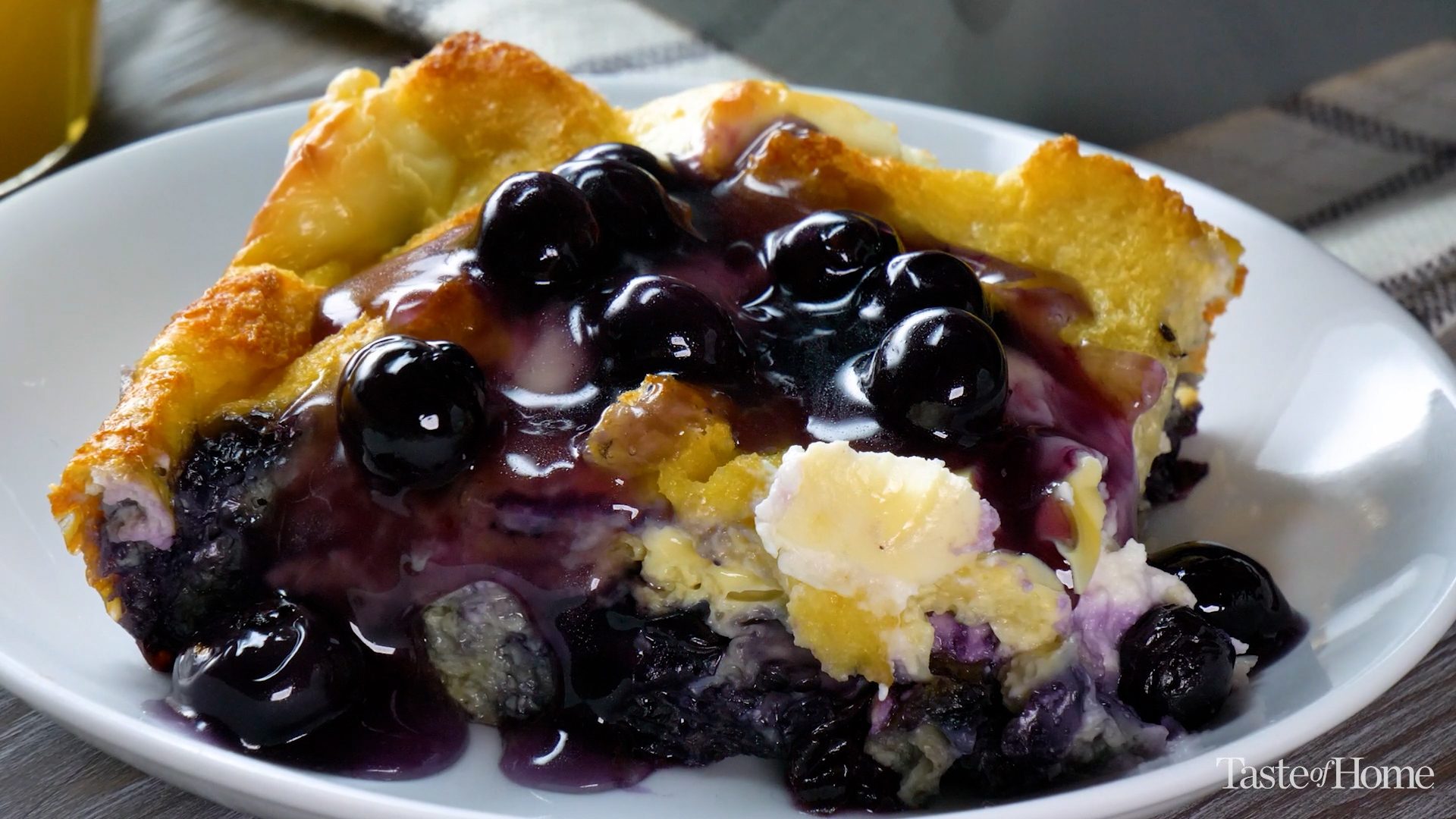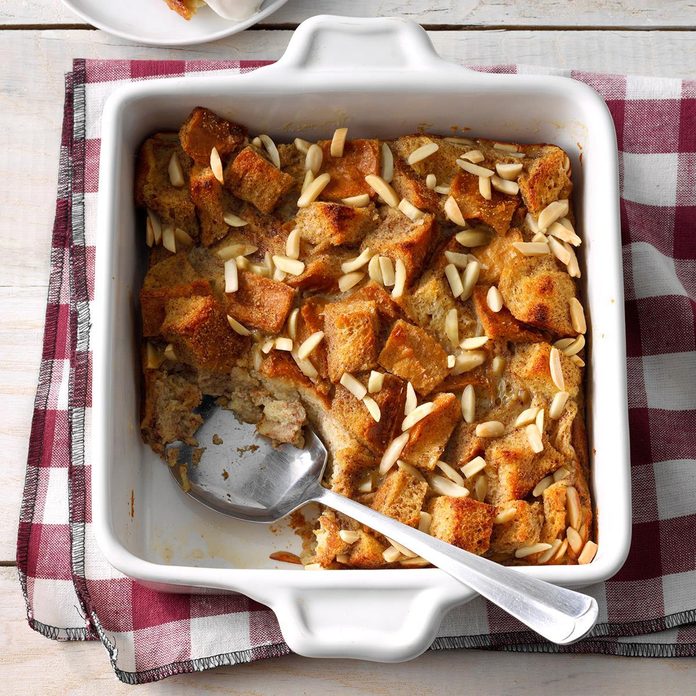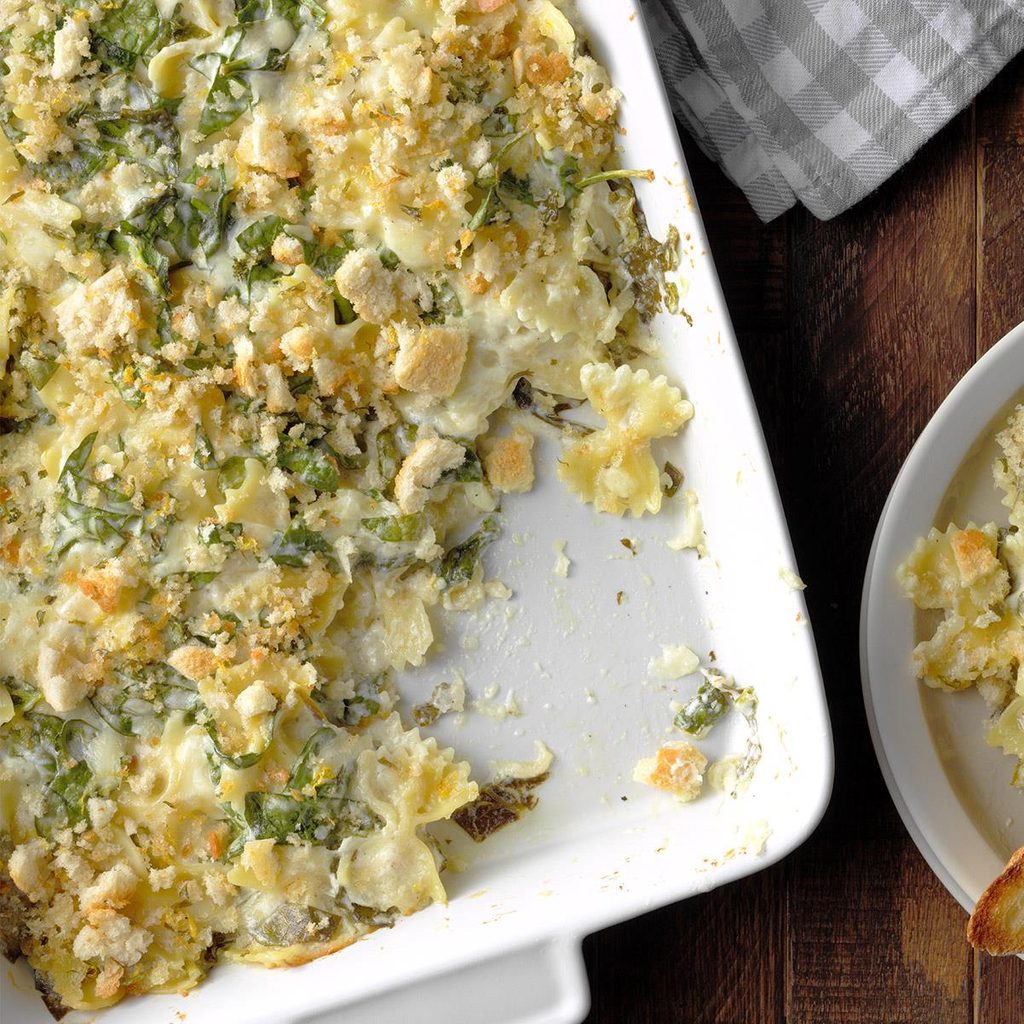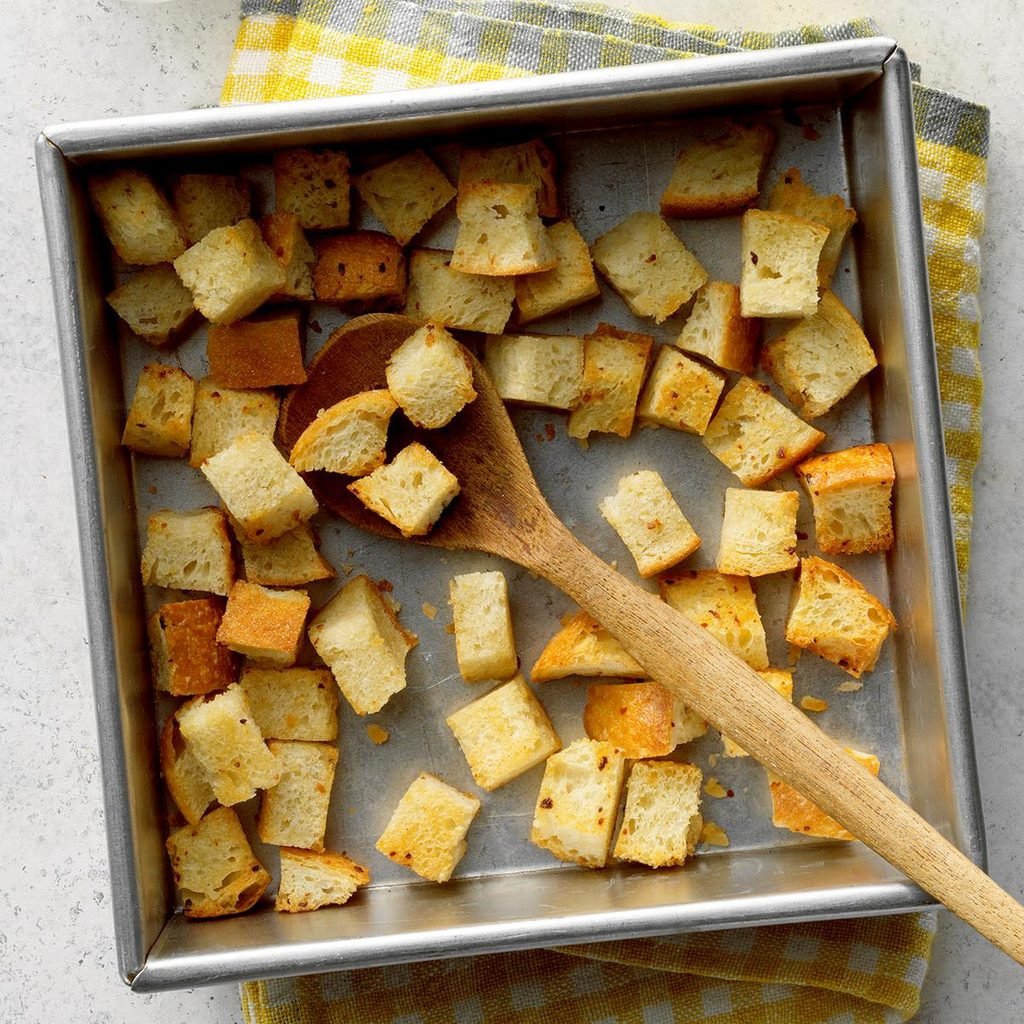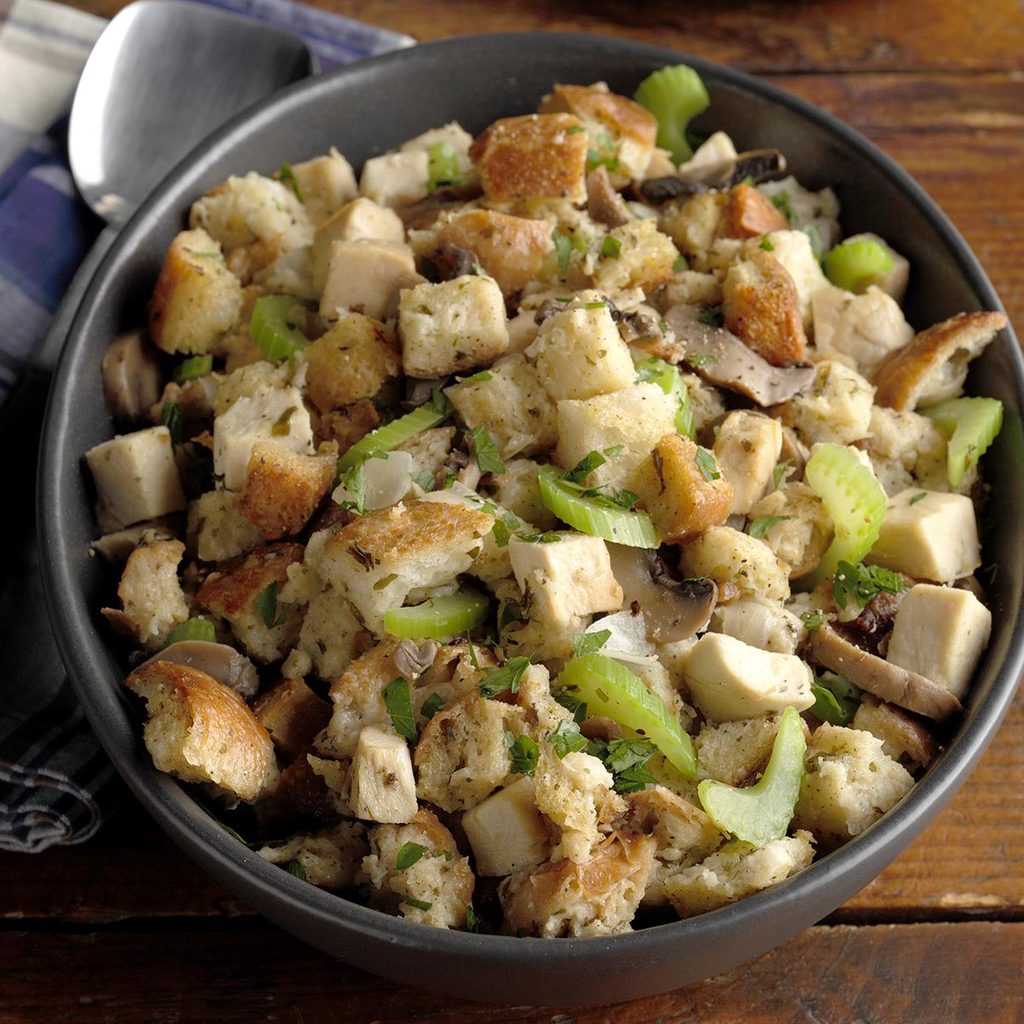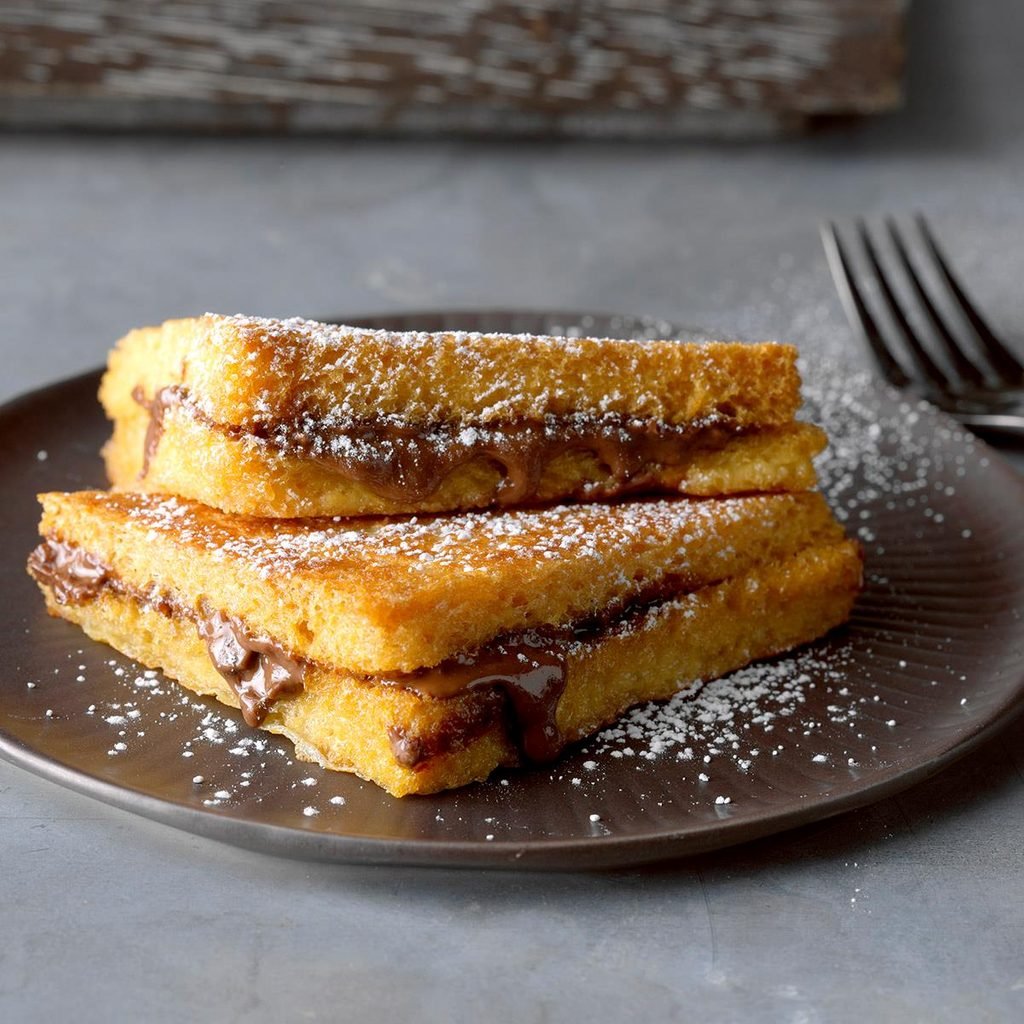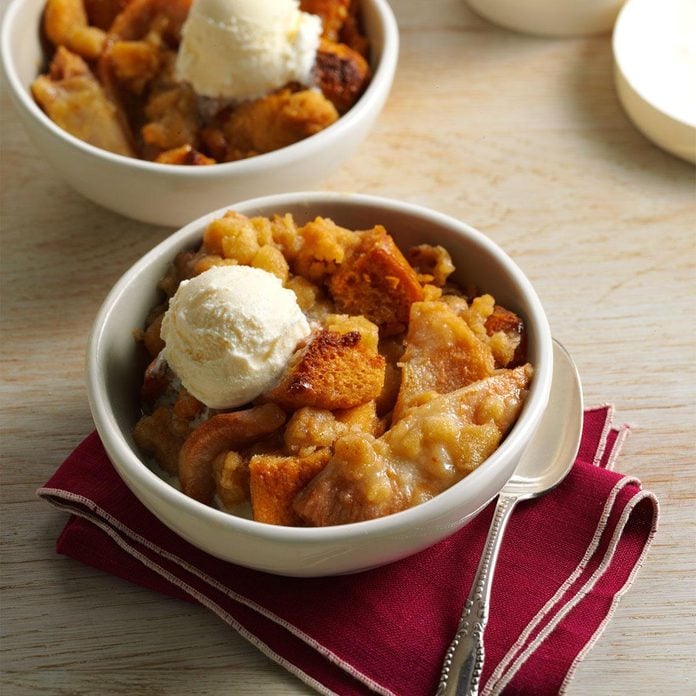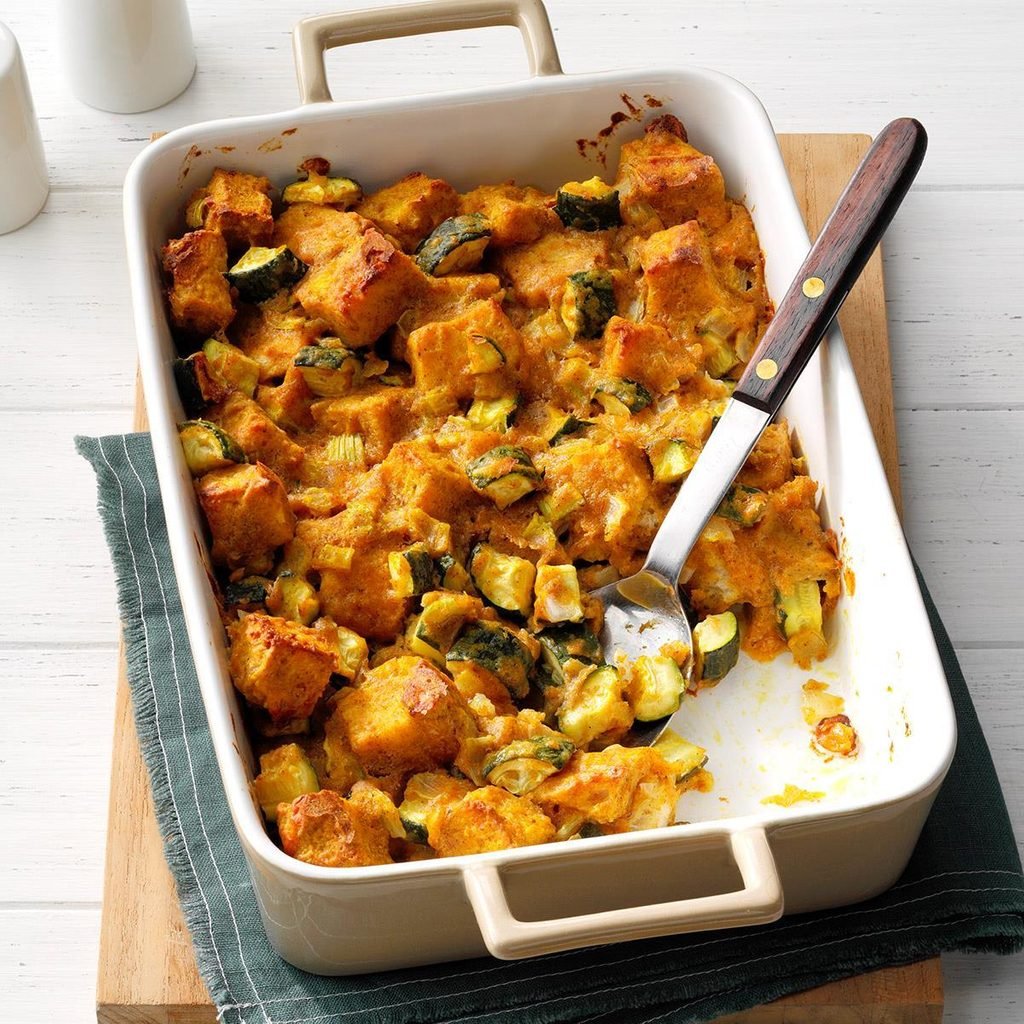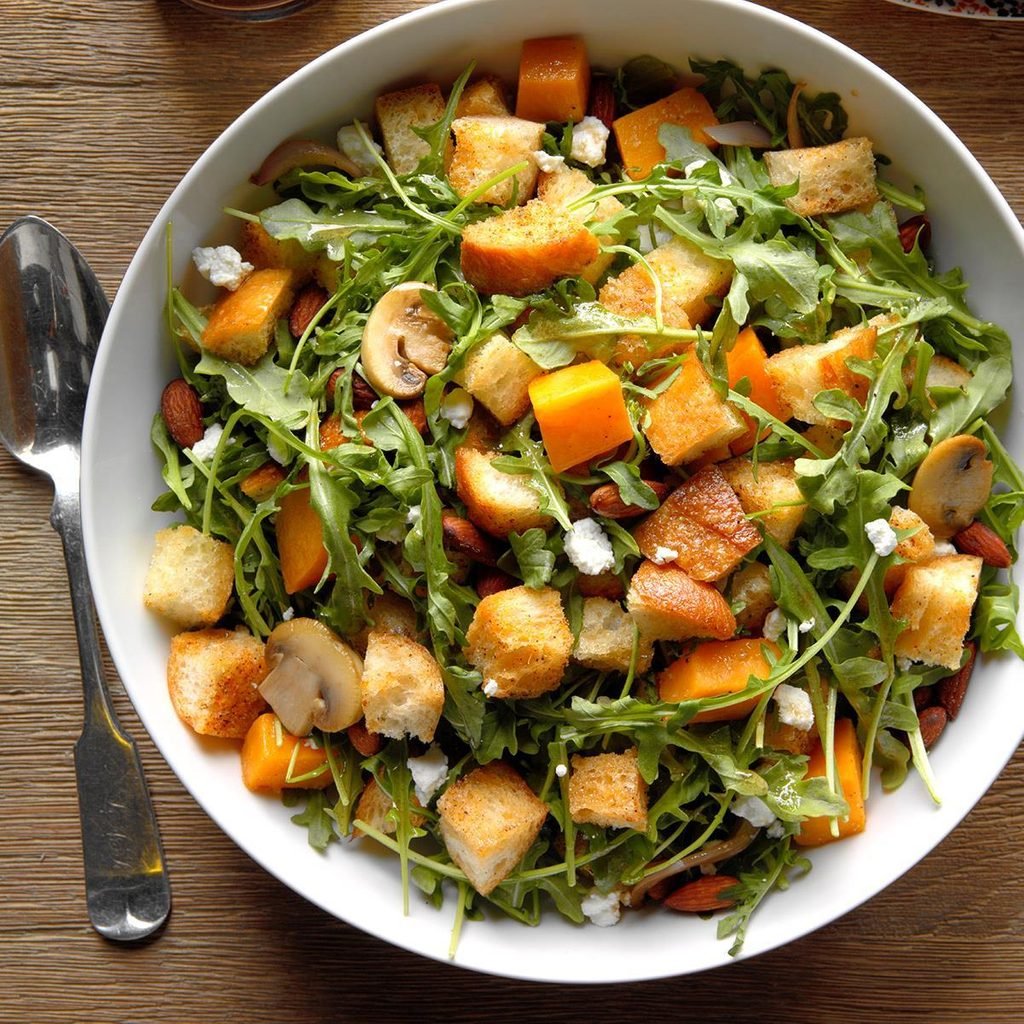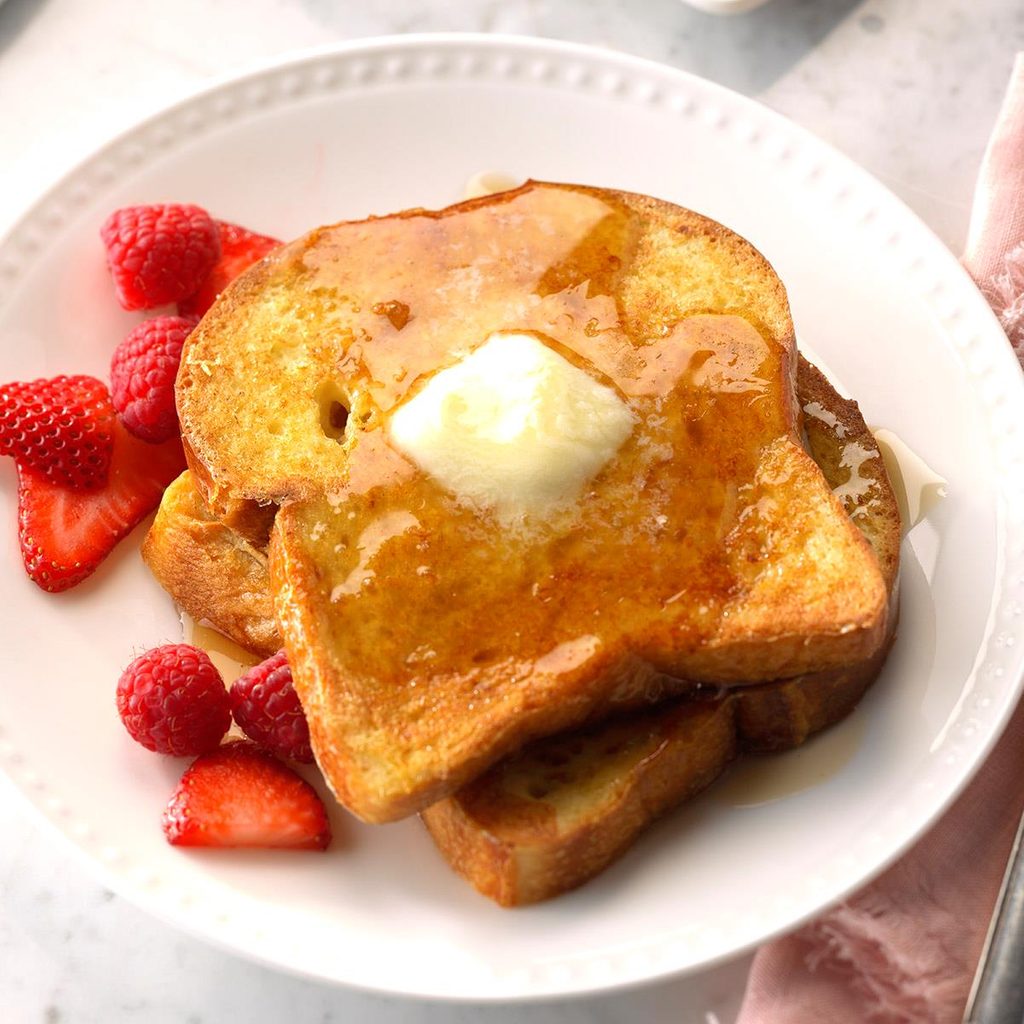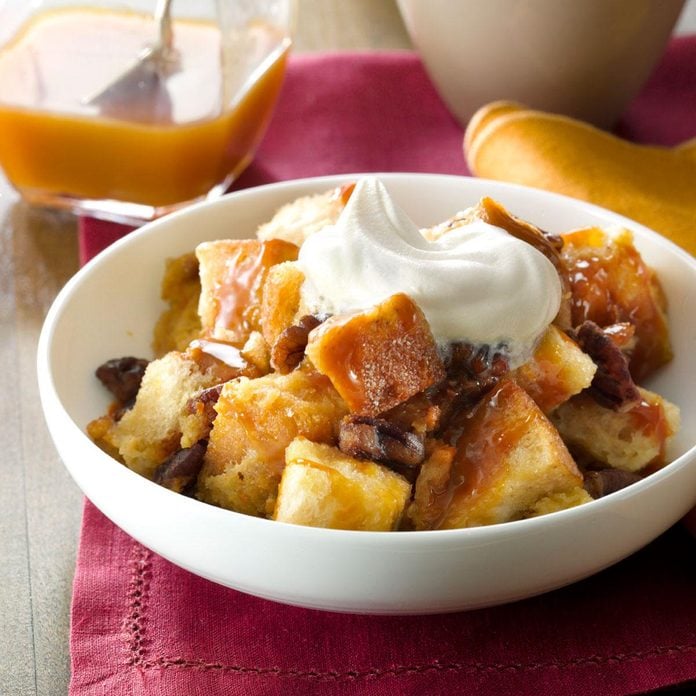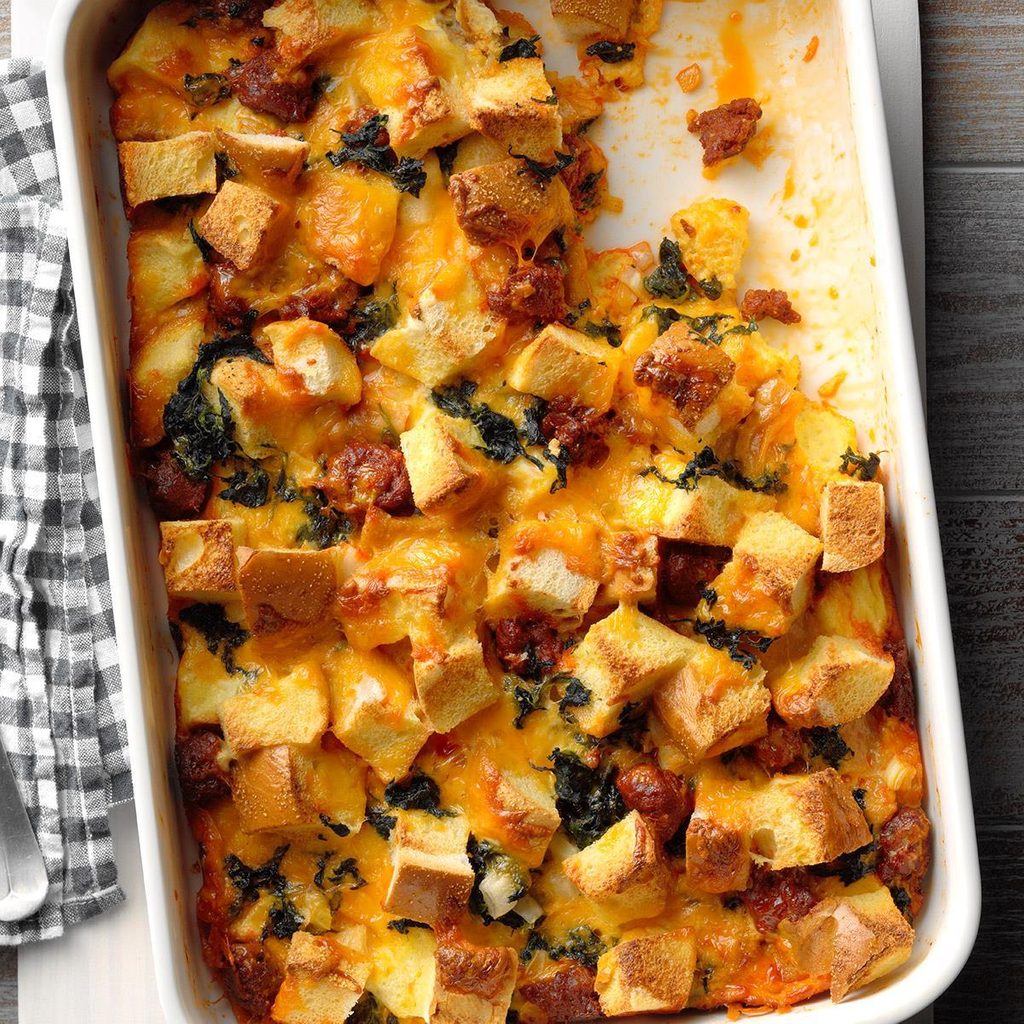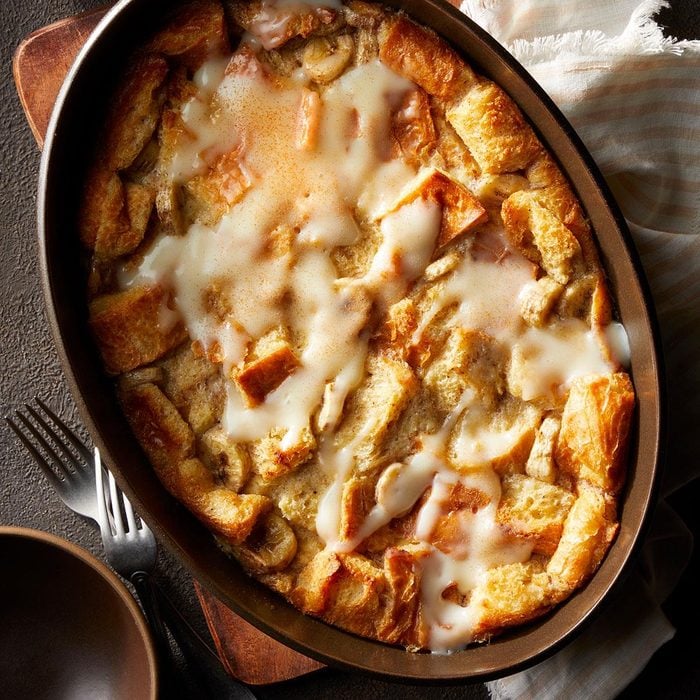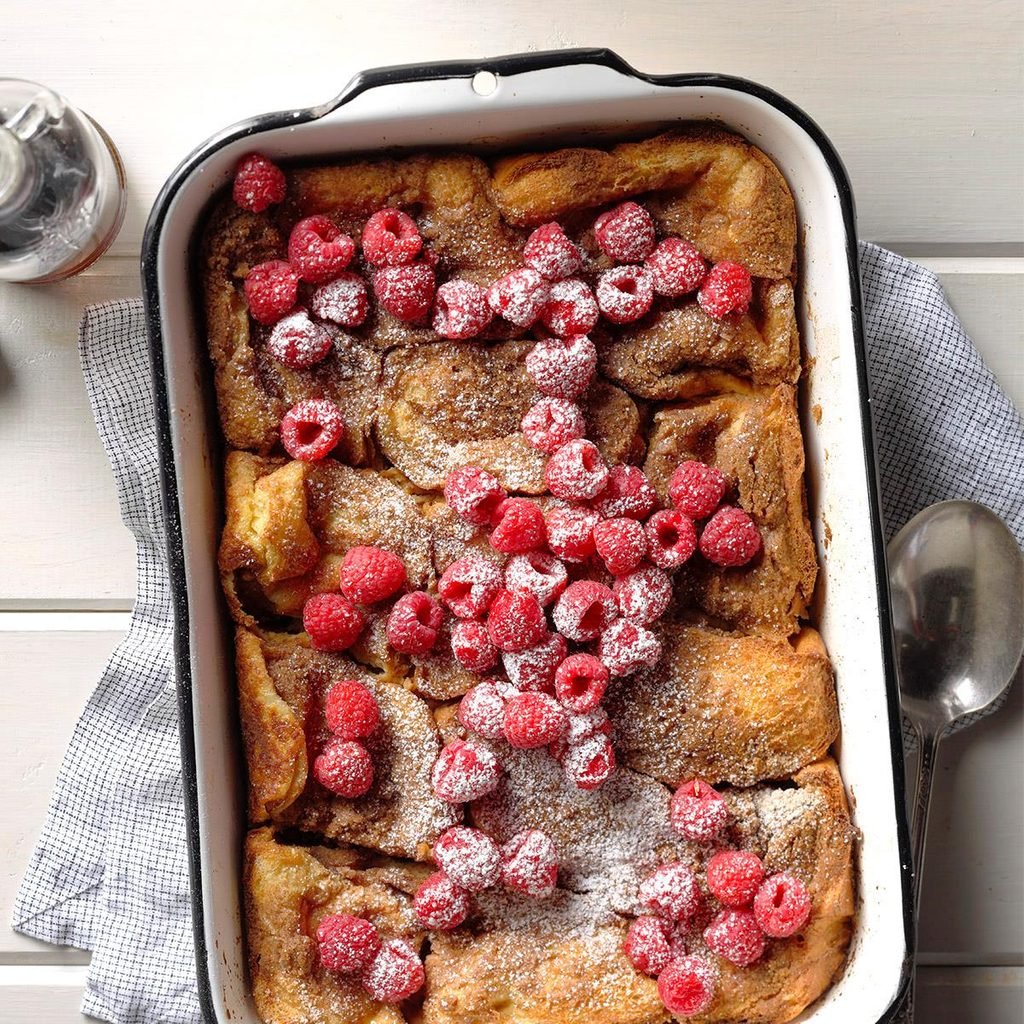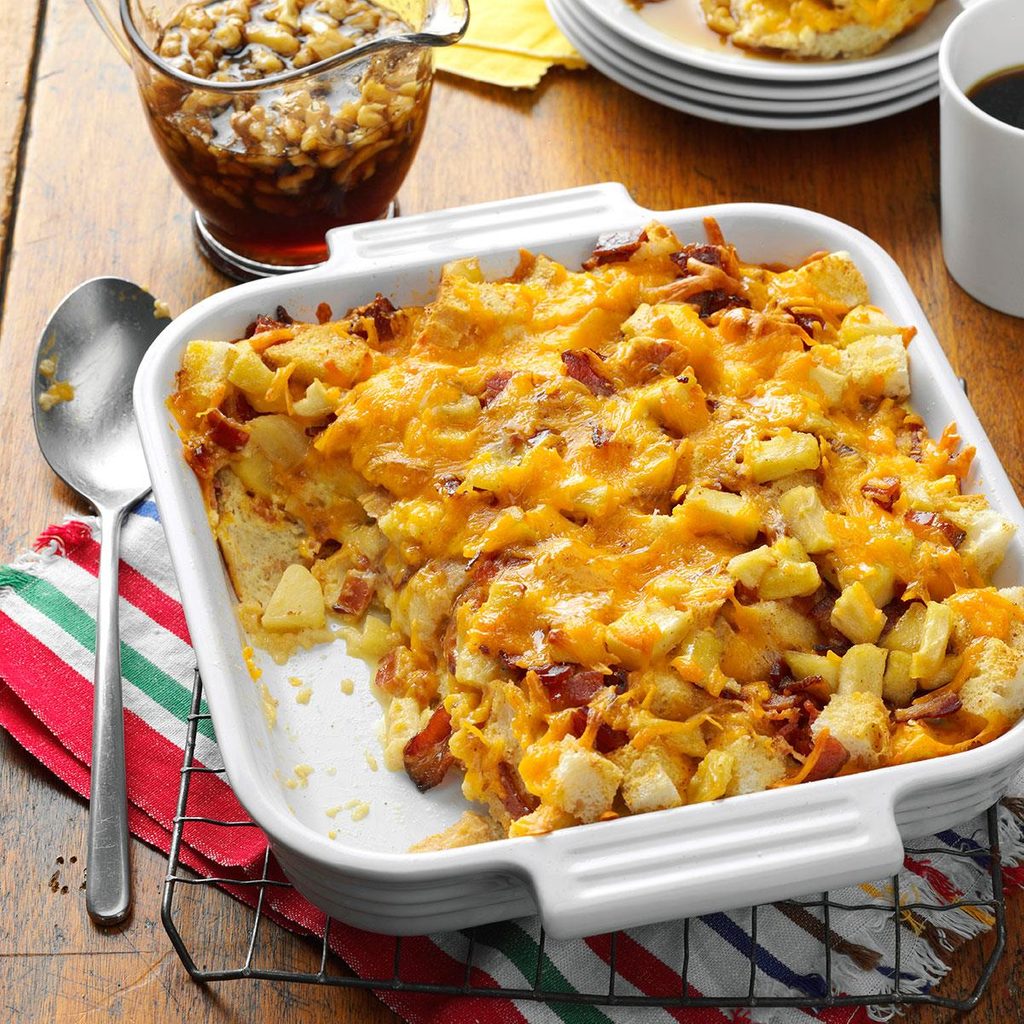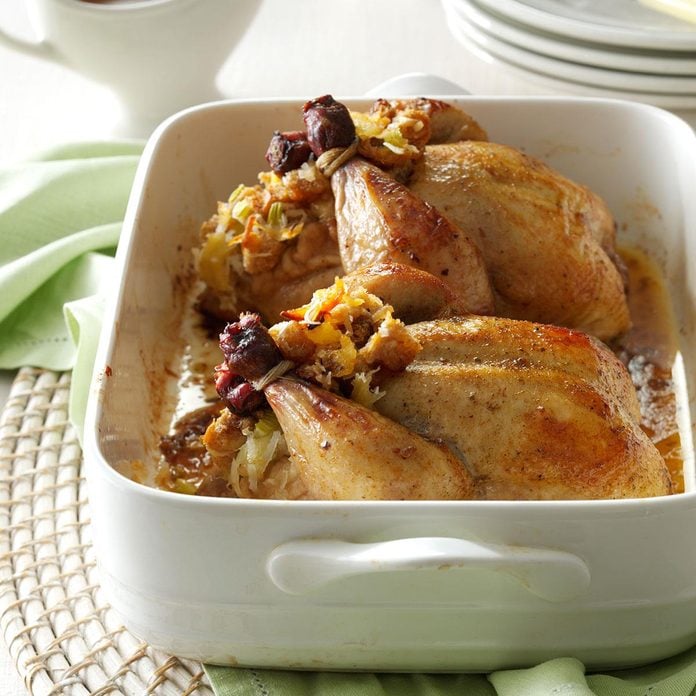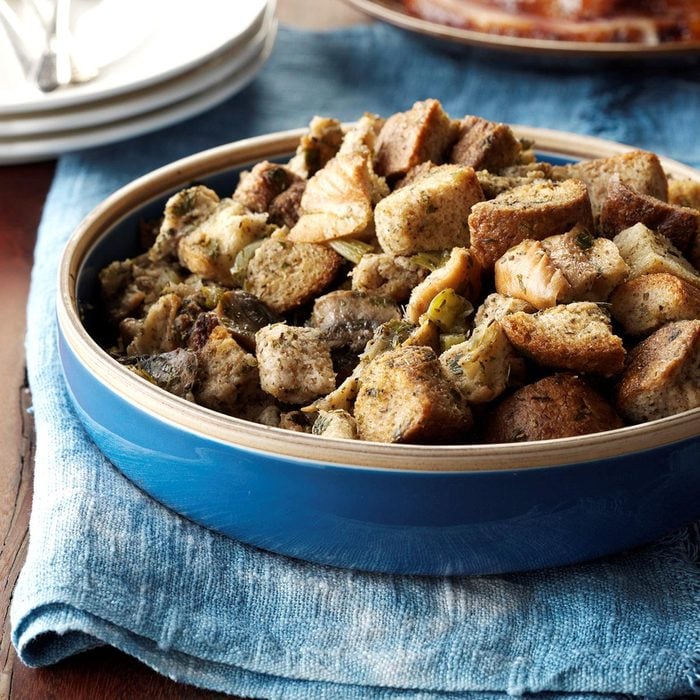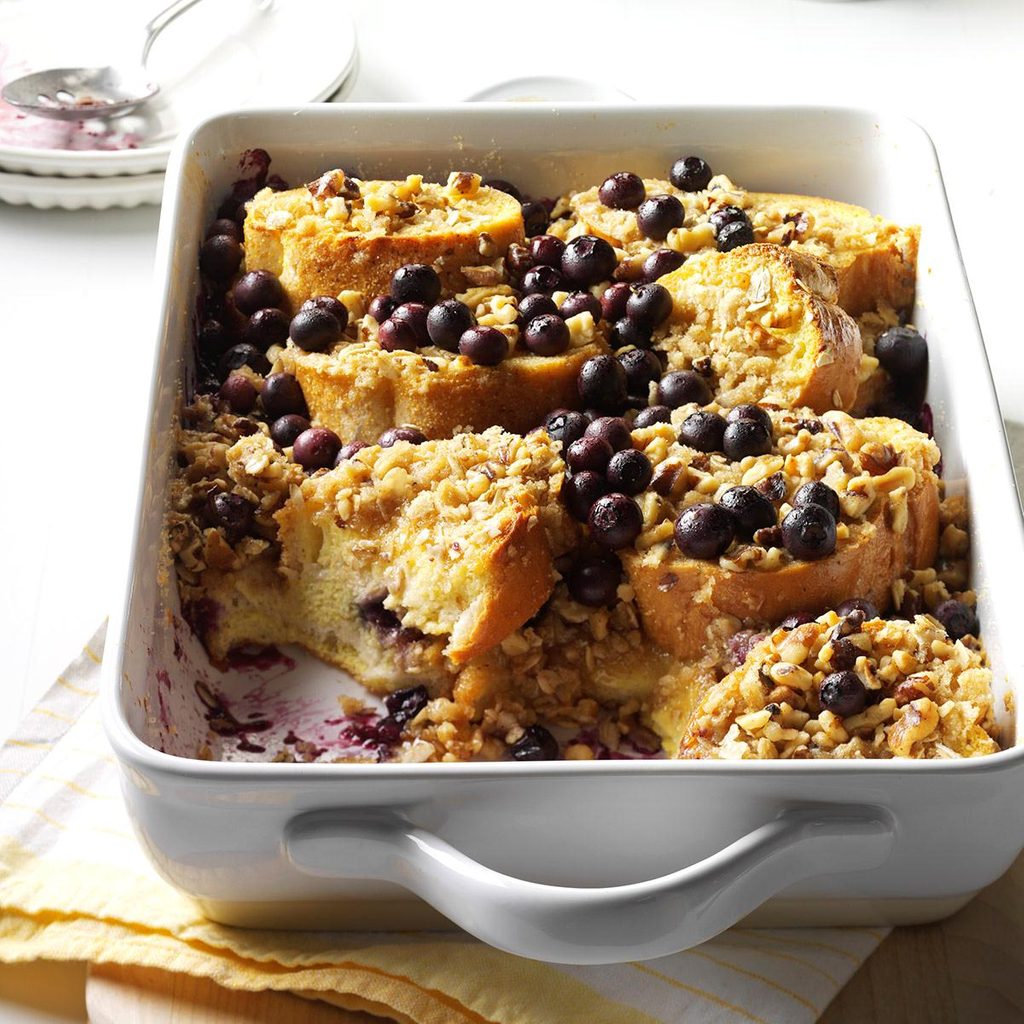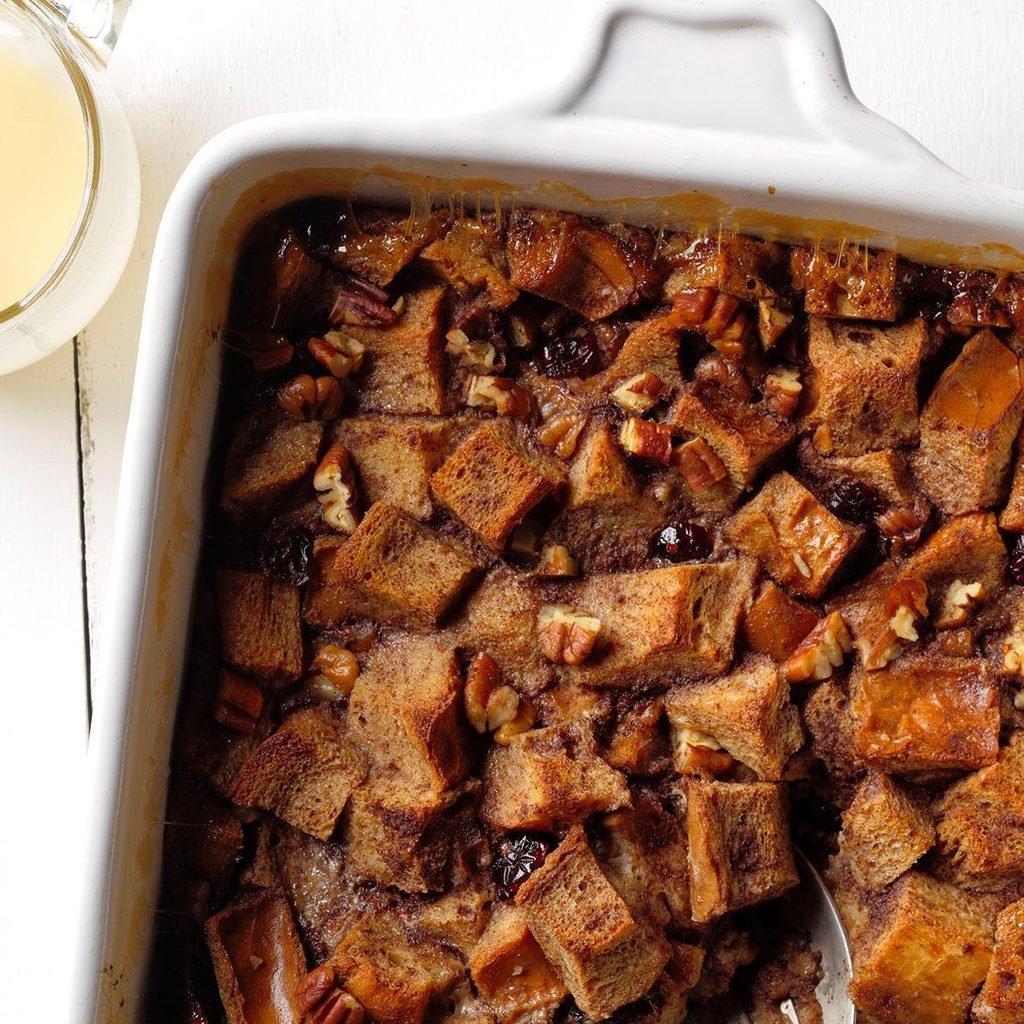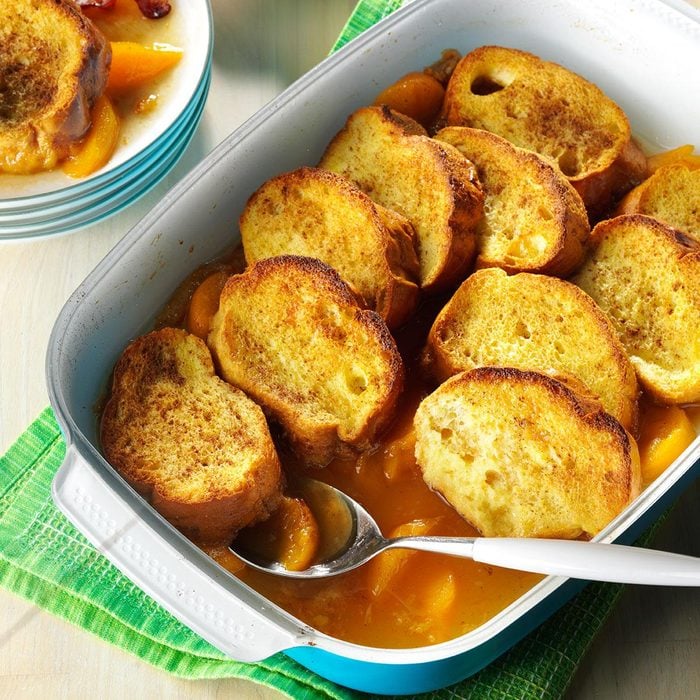Blueberry French Toast
A local blueberry grower shared this recipe with me, and it's the best breakfast dish I've ever tasted. With the cream cheese and berry combination, this French toast casserole reminds me of dessert. —Patricia Axelsen, Aurora, Minnesota
Go to Recipe
Chai-Spiced Bread PuddingNothing is cozier to me more than the warming spices of chai. This bread pudding incorporates those flavors to make a dessert that everyone raves about. —Jessie Apfe, Berkeley, California
Ranch PastaI came up with this ranch pasta after making recipes for a bridal shower. It was party day and I needed to take some shortcuts! Everyone loves the simple Parmesan ranch white sauce, and it's easy to throw in veggies you have on hand. —
Merry Graham, Newhall, California
Ham & Swiss Bread PuddingThis rich and hearty brunch dish is loaded with ham, mushrooms and cheese, plus layers of sliced French bread. It’s a terrific choice when you have overnight guests.
Salad Croutons"Homemade croutons are a delight to serve with your favorite mixed green salad-or as a crunchy snack," suggests Fayne Lutz of Taos, New Mexico. Her well-seasoned salad toppers will set you back a mere 4 cents per serving!
Slow-Cooked Chicken and StuffingPrepared in a slow cooker, this tasty, no-fuss main dish has a flavorful blend of seasonings and the irresistible duo of tender chicken and moist dressing. It's nice enough for the holidays and easy enough to fix year-round.
-Angie Marquart, New Washington, Ohio
Strawberry Panzanella SaladAlways a crowd-pleaser, this strawberry panzanella salad never disappoints. This version is sweet and offers the opportunity to use seasonal fruits in a creative way. For a fun twist, use margarita glasses when serving and rim the glasses with sugar and a strawberry garnish. —Careema Bell, Trenton, New Jersey
Chocolate French ToastTry this yummy treat for a special breakfast or brunch. The layer of chocolate hidden inside makes a wonderful flavor combination that appeals to kids of all ages. You might even be tempted to serve this chocolate sandwich for dessert!
—Pat Habiger
Spearville, Kansas
Mustard Ham StrataI had this at a bed-and-breakfast years ago. The owners were kind enough to give me the recipe, and I've made it many times since. —Dolores Zornow, Poynette, Wisconsin
Toffee-Pear Crisp Bread PuddingMy son loves pear crisp, but one night I was making bread pudding. He asked if I could make both. I compromised by combining two desserts into this one dish. It's absolutely fantastic! —Kurt Wait, Redwood City, California
Savory Zucchini Bread PuddingI have been serving this dish for years and always receive compliments on it. If you don't have day-old bread in your pantry, simply slice fresh bread and bake it at 300° for 10 minutes. —Mary Ann Dell, Phoenixville, Pennsylvania
French Toast SticksKeep these French toast sticks in the freezer for an instant filling breakfast. Their convenient size makes them ideal for a breakfast buffet. —
Taste of Home Test Kitchen
Butternut Squash Panzanella SaladThis colorful salad is easy to make, and it's even easier if you use precut chunks of butternut squash. You can use pecans in place of the almonds or watercress instead of the arugula or spinach. —Nancy Buchanan, Costa Mesa, California
Vanilla French ToastWe discovered this easy French toast recipe in Mexico. We couldn't figure out what made the French toast so delicious until we learned the secret was vanilla. Since then, we've added a touch of vanilla to our waffle and pancake recipes, and it makes all the difference. —Joe and Bobbi Schott, Castroville, Texas
Butterscotch-Pecan Bread PuddingBread pudding fans just might hoard this yummy butterscotch version. Toppings like whipped cream and a butterscotch drizzle make this dessert absolutely irresistible. —Lisa Varner, El Paso, Texas
Scalloped Chicken CasseroleThis is a great catchall meal-in-one dish. Any meat can be used, and vegetables may be substituted based on what you have available.—Marion White, La Center, Washington
Cheddar and Chorizo StrataStratas are a wonderful way to use up bits and pieces of leftovers you have on hand. You can make them meatless or substitute the cheeses and the meats. This dish can be made a day before baking. If you like more heat, use pepper jack cheese. —Kallee Krong-McCreery, Escondido, California
Cinnamon-Apple Brown BettyIf I had to define the "Betty" of Apple Brown Betty, she'd be a smart and thrifty Southern gal with a knack for creating simple, soul-comforting desserts. In this sweet dish, spiced apples are slow-cooked between layers of cinnamon-raisin bread cubes for a wonderful twist on the traditional oven-baked classic. —Heather Demeritte, Scottsdale, Arizona
Banana Bread PuddingWhen I visited my grandmother in summer, I always looked forward to the comforting banana bread pudding she'd make. With its crusty golden top, custard-like inside and smooth vanilla sauce, this pudding is a real homespun dessert. Now I make it for my grandchildren. —Mary Detweiler, Middlefield, Ohio
Green Chile Brunch BakeIt's easy to make this ahead of time in a 13x9-inch pan. It is filling, is perfect for a crowd and helps out busy parents. —Trista Thinnes, Fort Worth, Texas
Baked French ToastAny day is special when Mom makes one of her French toast recipes, like this do-ahead baked version. —Jill Baughman, New York, New York
Mainly Mushroom Beef CarbonnadeThis is the ultimate comfort food, an earth-and-turf combo that smells delicious while cooking and tastes like home. The mushrooms taste so meaty, you can decrease the amount of beef and add more portabellos if you like. —Susan Asanovic, Wilton, Connecticut
French Toast FingersKids love anything on a stick. Bite-sized French toast skewers make a fun breakfast for them to munch before heading out the door. —Mavis Diment, Marcus, Iowa
Special Herb DressingHere's a fabulously satisfying dressing with all the great tastes people crave: meat, fish herbs, earthy mushrooms, crunchy apples and water chestnuts, and a zesty burst of tart cranberries. —Trudy Williams, Shannonville, Ontario
Apple, Cheddar & Bacon Bread PuddingI had this dish at a bridal brunch many years ago. It was so delicious that I created my own version, and this is the result. Now I make it all the time. Enjoy! —Melissa Millwood, Lyman, South Carolina
Pineapple-Stuffed Cornish HensMy mother brought this recipe back with her from Hawaii about 25 years ago. The tender meat, pineapple-coconut stuffing and sweet-sour sauce made it a favorite of my family and friends. I keep copies of the recipe on hand to share. —Vicki Corners, Rock Island, Illinois
Old-Fashioned DressingRemember Grandma's delicious turkey dressing? Taste it again combined with flavorful herbs and crisp veggies in this family-favorite dressing. You'll love the fact you can make it in your slow cooker. —Sherry Vink, Lacombe, Alberta, Canada
Blueberry Crunch Breakfast BakeBlueberries in season make this a very special breakfast, but I find that frozen berries can work just as well. My grandmother used to make this with strawberries and I always loved to eat it at her house.—Marsha Ketaner, Henderson, Nevada
Cranberry Amaretto Bread PuddingThis is an update to a recipe that's been in our family for three generations. The combination of white chocolate and amaretto mingled with seasonal cranberry is my favorite way to end any celebration's meal. —Jennifer Evans DaCastello, Virginia Beach, Virginia
Chicken Brunch BakeChunks of tender chicken add heartiness to this appealing brunch casserole. This was my son's favorite hot lunch meal from high school. —DeLee Jochum, Dubuque, Iowa
Peach French ToastLet the aroma of baked peaches, brown sugar and cinnamon wake up your family. When you serve the tender slices of French toast, be sure to scoop up the golden syrup in the bottom of the pan and drizzle it over the top. —Geraldine Casey, Anderson, Indiana
Ham & Brie StrataThere's nothing quite like my comfy strata made with Brie, ham and mushrooms. Put it together and bake it now, or hold it overnight to pop into the oven tomorrow. —Elisabeth Larsen, Pleasant Grove, Utah
Baked French Toast with StrawberriesFrench toast is a crowd-pleaser, but it's hard to make for a big group. This overnight casserole with strawberries and a sweet pecan topping fixes everything. —David Stelzl Jr., Waxhaw, North Carolina
Smoked Salmon-Potato Brunch BakeThe two different potatoes, fresh herbs and different textures make this savory brunch bake unique and special.—Victoria Johnson, Gilbert, Arizona
